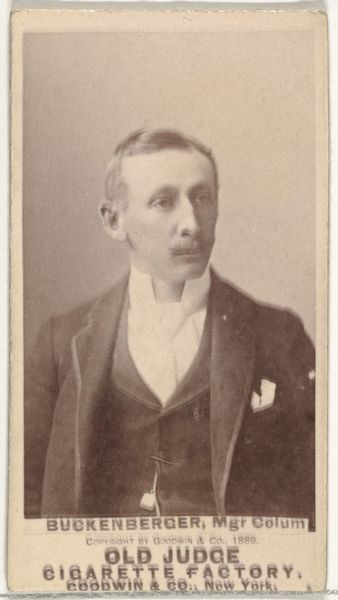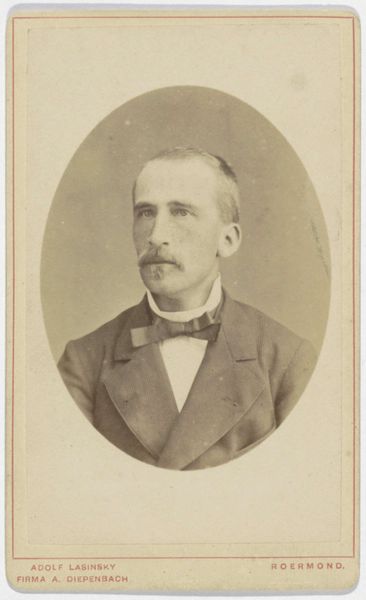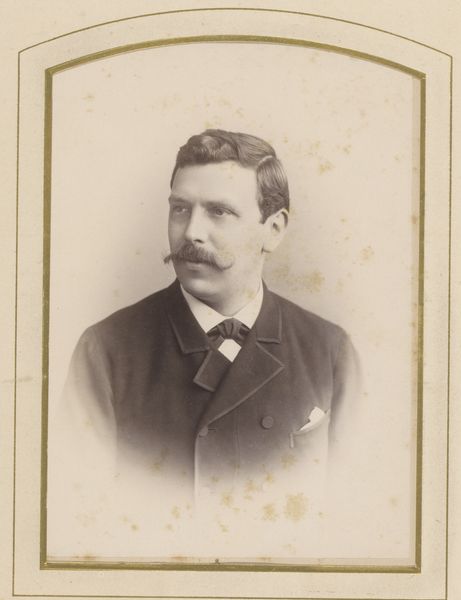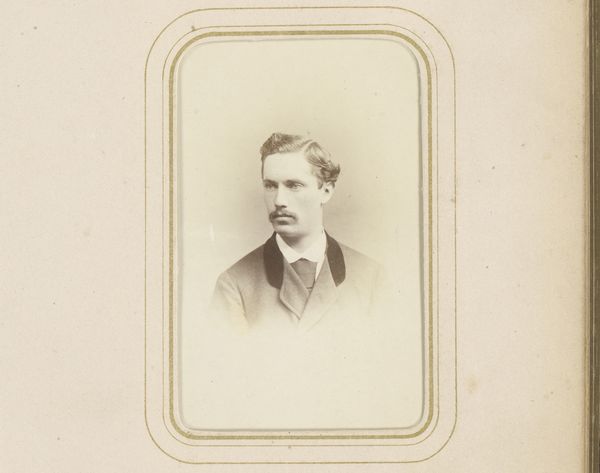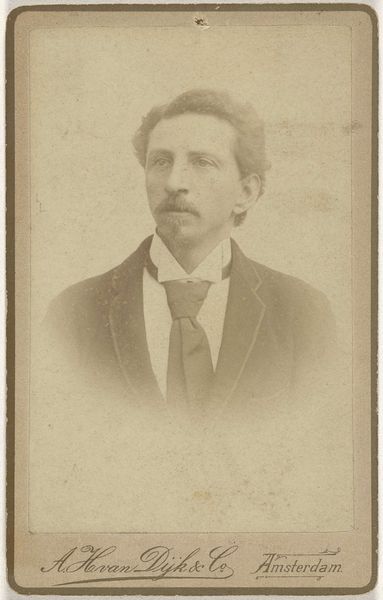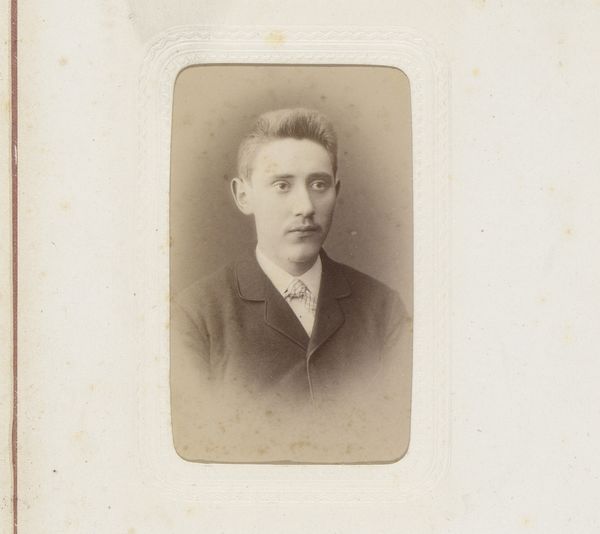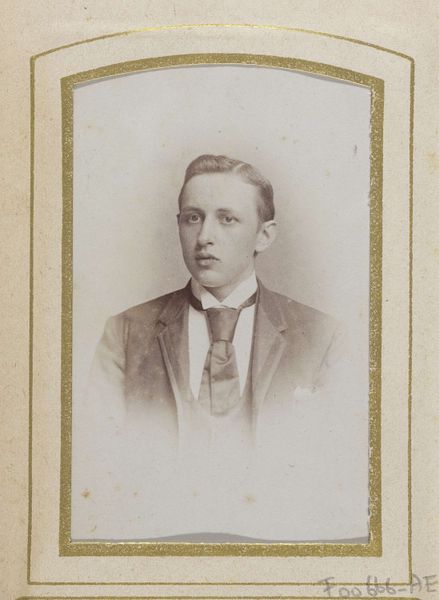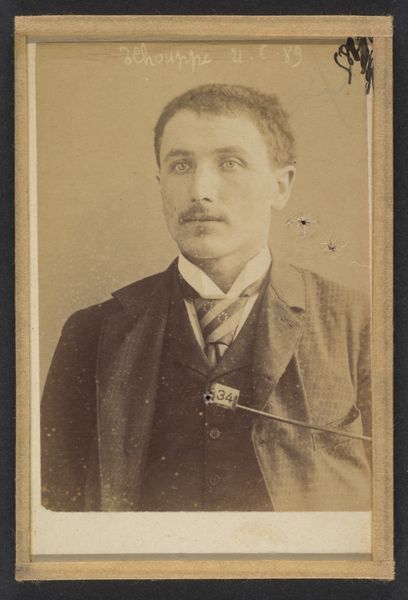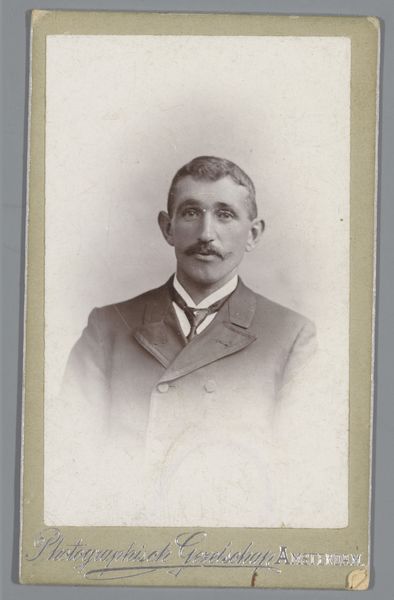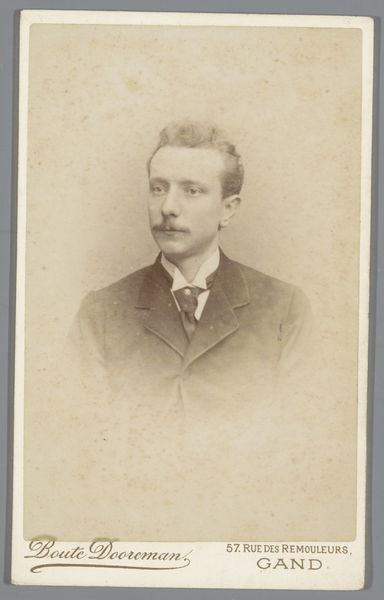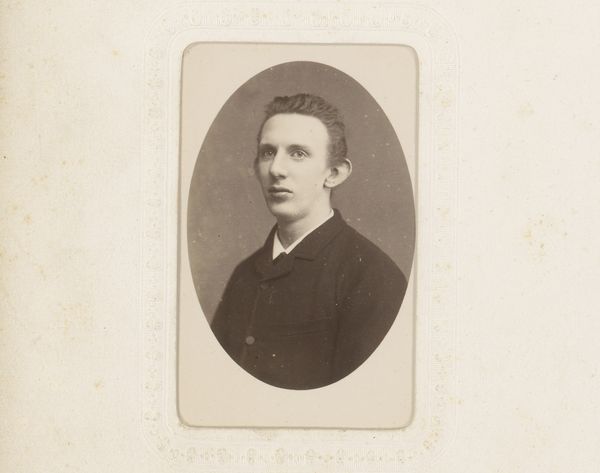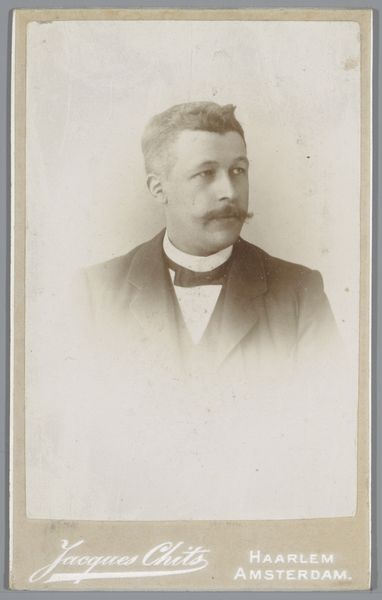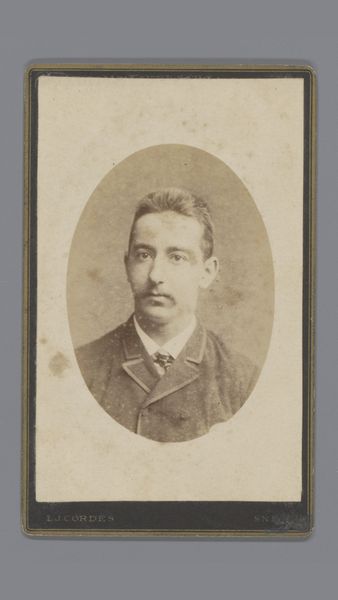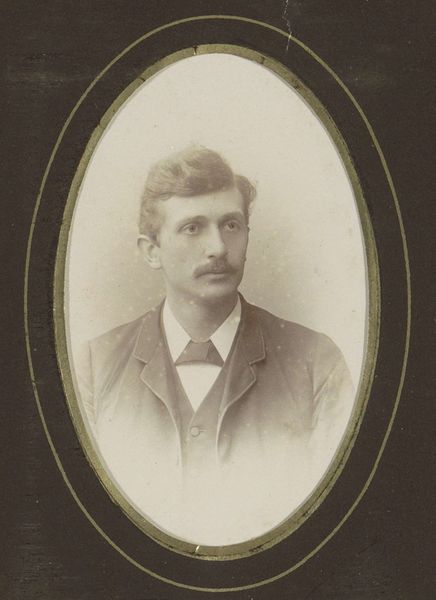
photography, gelatin-silver-print
#
portrait
#
photography
#
gelatin-silver-print
Dimensions: height 80 mm, width 54 mm, height 296 mm, width 225 mm
Copyright: Rijks Museum: Open Domain
Curator: Standing before us is a studio portrait, rendered in gelatin silver print sometime between 1863 and 1866. Editor: The image has an almost unsettlingly still quality about it, a frozen moment of contrived respectability. It seems very staged, controlled. Curator: Exactly. Think about the photographic processes of that period. Photography was becoming more accessible, but studio portraits remained a deliberate act of self-representation, especially for middle-class men seeking to solidify their position in a rapidly changing society. Editor: Which means a conscious presentation of status. The neatly trimmed moustache, the crisp bow tie, and dark suit signal wealth and professional standing in the 19th century. I am more drawn to the print itself, however, to consider the social forces in image-making and what that print represented in terms of production value for Albert Greiner's clients. Curator: Absolutely, and that is where the tension resides for me: what does a portrait such as this communicate to later generations? Is it a study in patriarchal representation, or does it perhaps invite a more nuanced reflection on gender and performance in the Victorian era? It's critical to consider what visual markers or symbolic meanings become conflated with class or privilege. Editor: Consider also how portraits in new mediums democratized artmaking. Here, the access and control the man in the image has to resources is telling. If it wasn't just about a specific depiction, then the very materiality is just as significant; the labour, resources, the chemicals... these would not be equally available. Curator: These observations point towards a wider discussion regarding power structures within art and society and encourage thoughtful discourse beyond the surface-level aesthetics of photographic history. Thank you. Editor: A necessary reframing. We should all endeavor to think of how processes underpin these images; how technological advancements were not neutral and what that meant for artistic value in a broader sense.
Comments
No comments
Be the first to comment and join the conversation on the ultimate creative platform.
